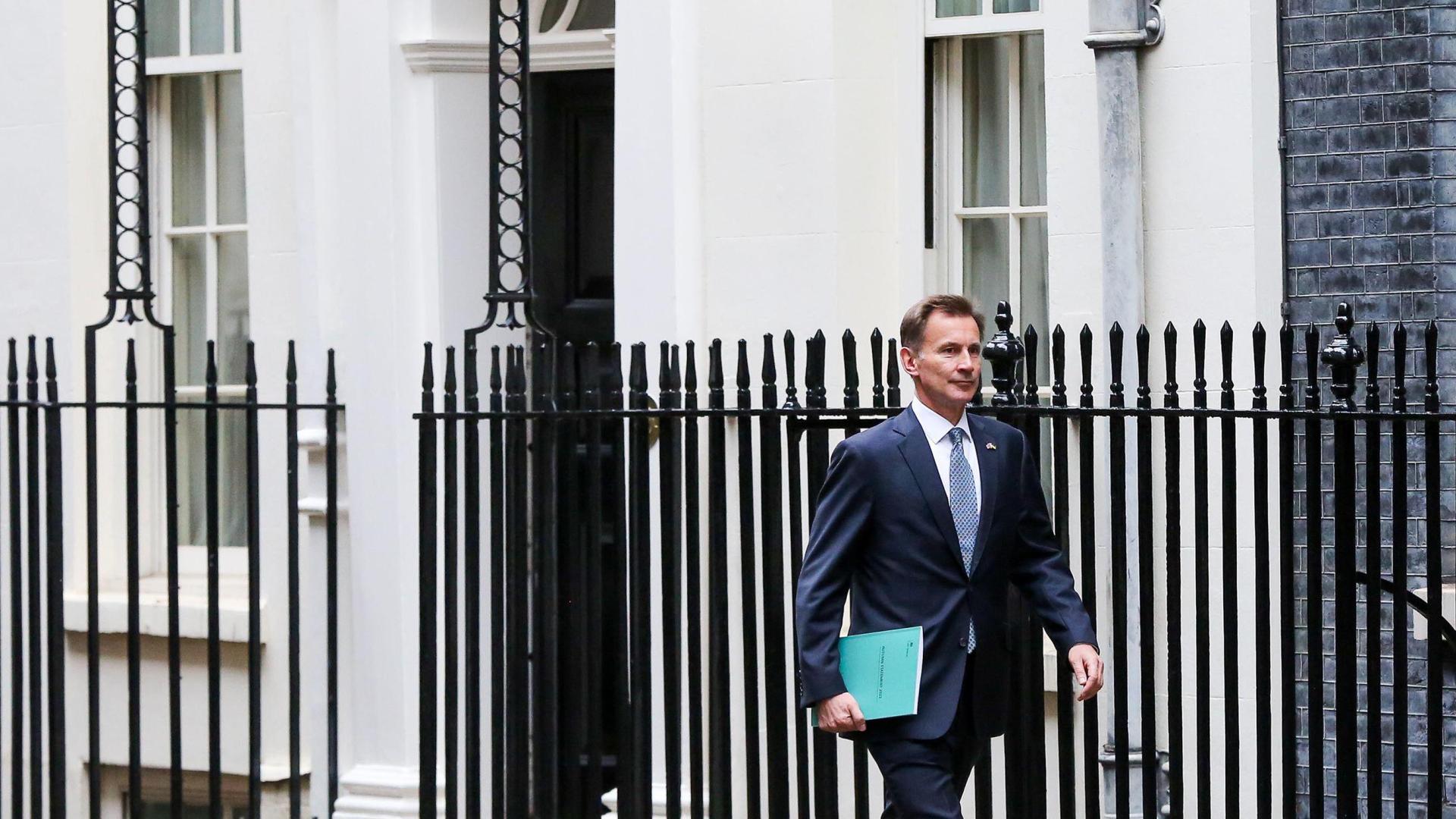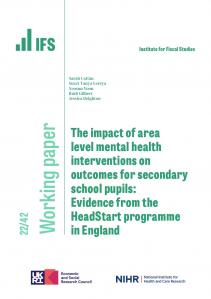Paul Johnson, Director of the IFS, said:
“Once again Jeremy Hunt can be grateful that the Office for Budget Responsibility is more optimistic than the Bank of England. It handed him some room for manoeuvre. On the other hand his own poorly designed fiscal rule, which requires debt to be falling in the last year of the forecast, hemmed him in. He’s now meeting that target by an even smaller margin than previously - and even that requires the government to claim it will stick to an extremely tight set of post-election spending plans.
Looking for growth Mr Hunt pulled a whole range of policy levers. Overall these look like a sensible set of changes which could have the sort of marginal, but positive, impact which is perhaps as much as we can expect from measures in a single Budget.
The big expansion in the childcare offer to families with younger children, likely doubling spending on childcare, looks like it will take us close to completing a 25 year long journey during which a new arm of the welfare state has been created. It should help tens, but not hundreds, of thousands of parents into work – provided that it is appropriately funded.
In addition, the White Paper published alongside the Budget proposed some quite fundamental changes to the disability benefit system, in part to encourage work. Poorly designed pensions tax allowances were increased or scrapped in an effort to encourage a relatively small number of better-off workers to stay in the workforce a bit longer. These pension tax changes are unlikely to have a big effect on overall employment.
There are many benefits to allowing full expensing of investment against corporation tax, though it is not without drawbacks. But the fact that this change is temporary and was only announced now is most definitely not welcome. Today’s announcement is just the latest in a long line of changes and temporary tweaks. There’s no stability, no certainty, and no sense of a wider plan.
As expected, the energy price cap will remain at its current level for the next 3 months, so that an average bill will stay at £2,500 rather than rising to £3,000. There was some extra money to shore up the defence budget, alongside the extra cash for childcare. And surprise surprise, he found £6 billion to freeze fuel duties and maintain the supposedly temporary 5p-a-litre cut announced last year, despite a fall of around 40p a litre in the price of petrol over the last year. Yet we’re supposed to believe, wink wink nudge nudge, that the 5p cut will be reversed next year. Forgive me if I harbour some doubts.
Just as notable was what Mr Hunt didn’t announce. There was no funding to be found to improve the pay offer to striking public sector workers, where £6 billion might have been enough to make an inflation-matching pay offer possible this coming year. That’s a political choice. Money for motorists, but not for nurses, doctors and teachers. And the big personal tax rises planned for next month, via the freezing of income tax thresholds, will still go ahead. That will mean an extra £500 in tax for basic rate taxpayers in 2023–24, and an extra £1,000 for higher rate taxpayers. These tax rises may be necessary from a fiscal point of view, but they are an important part of the reason why household incomes are still expected to fall more over the current two year period than at any point in living memory.
The bigger fiscal picture hasn’t changed enormously since the autumn. The OBR expects the economy to grow a bit faster in the short-term, and a bit slower in the medium-term, combining to produce an economy 0.6% larger in real-terms in 2027–28 than under the autumn forecast. The government remains on track to meet its relatively loose fiscal targets by only the barest of margins, despite a historically high tax burden and some extremely tight post-election numbers for spending on public services. Debt interest spending is forecast to remain well above what was forecast a year ago. And we are still in the midst of an enormously difficult period for households. We’re by no means out of the woods yet.”
Childcare support
Today’s announcements will see spending on childcare double again by 2027. A separate press release examining the issues raised is published alongside this release.
The fiscal outlook
The Chancellor will no doubt welcome the significant improvement in today’s forecast, with economic growth revised up a little, and tax revenues revised up a lot: £28 billion in the last year of the forecast. The improvement in economic growth arises from a judgement that the policies announced today, combined with high levels of immigration, will boost the size of the workforce and energy prices will fall as currently expected (since productivity growth per worker is still forecast to disappoint).
This improvement allowed the Chancellor to increase planned spending, and to cut taxes, by around £20 billion a year in the near-term falling to £10 billion in 2027–28. And this still leaves expected borrowing as a share of national income in the medium term around 0.6% of national income lower than in the previous forecast. Despite this significant improvement, the Chancellor’s headroom against his target of having debt falling in the fifth year of the forecast is still all but nonexistent – highlighting the peculiarity of a target focusing on one particular year. While we should be aiming to reduce debt over the medium-term; whether or not it falls in that particular year is not important.
Public spending
Today’s Budget contained two notable spending announcements, both of which were accompanied by ‘new’ money (in the sense that spending plans have been topped up). These were the high-profile childcare announcements (which come at a cost of £5.2 billion to the exchequer by 2027–28) and the pre-trailed top-up to the defence budget (of around £2 billion per year).
Spending plans for after 2025 were topped up to reflect the defence and childcare changes, but otherwise left unchanged. Those plans will see day-to-day public service funding grow by around 1% per year in real terms, and investment budgets frozen in cash terms. Sticking to them while increasing the NHS budget and delivering on the new ambition to boost defence spending to 2.5% of national income will require a squeeze on other areas.
Changes to pension limits
The Budget abolishes the existing £1.07 million lifetime limit on pension savings and increases the annual limit on pension saving from £40,000 to £60,000 for most people (and from £4,000 to £10,000 for the very highest earners). While there will be no limit on the size of the pension pot that can be accumulated without a tax penalty, the tax-free 25% will continue to apply to only the first £1.07 million of pension savings. This is a sensible way to limit what would otherwise be a tax subsidy to those with already very large pension pots. However, the fact that employer pension contributions escape National Insurance contributions entirely, along with the complete exemption of pension pots from inheritance tax, will still see this policy provide further substantial tax breaks to those with very high levels of pension wealth.
The impact of the policy on retirement behaviour is hard to predict. On the one hand, being able to save more in a tax-favoured pension effectively reduces the tax on work and may encourage some to work more. On the other hand, more generous annual allowances may allow workers to build up retirement savings more quickly – allowing them to retire earlier. The OBR’s judgement is that the former will outweigh the latter, boosting employment by 15,000 people.
More generous tax allowances for business investment, but only for three years
From April, and for the next three years, businesses will be able to deduct 100% of all plant and machinery investment spending immediately when calculating taxable profits. This increased generosity of capital allowances will boost business investment in the short run.
The UK needs an investment-friendly tax system for the long term, not just for the next three years. Without certainty that the new regime will continue, the timing of investments will be distorted and the overall boost to investment lower.
The government says the policy will cost an average of around £9 billion for each of the three years. But most of that cost will be recouped in future years. This is because the investment spending that firms will be able to deduct immediately during those three years would otherwise have been gradually deducted over a longer period.
There are many benefits to allowing investment spending to be deducted immediately. As a permanent policy, it would be an improvement, though not without drawbacks. Limiting the allowance to plant and machinery means corporation tax continues to distort asset choices. And more generous capital allowances interact with the treatment of financing costs to increase the subsidy for many debt-financed investments. That’s not a good thing. What matters is not only how much firms invest overall, but what they invest in. Economic growth is not well served by subsidising unproductive investments.
Corporation tax has changed almost every year since 2010. An endless string of temporarily more generous allowances is not a good way to set policy. For any level of allowance, investment would be higher if the system were stable. We desperately need a stable corporation tax regime, with a properly reformed tax base, that improves investment incentives and lays down the conditions for higher business investment in the long run. The policy announced today does not do this.
Investment Zones
The Chancellor confirmed the creation of up to 12 ‘Investment Zones’ across the UK with the aim of boosting growth and supporting links between businesses and universities in five priority sectors. The chosen zones will be able to choose from £80 million of funding for skills, business support and infrastructure, or £35 million in funding and a set of tax reliefs that the government estimates will cost £45 million over five years. This includes full reliefs from stamp duty land tax on sales of commercial property, business rates on new or extended properties, employer NICs on the first £25,000 of pay for each new employee, and enhanced capital allowances.
The policy has a number of important similarities with the Freeports that are currently being rolled out - although with less economic activity expected to take place in each Investment Zone than in each Freeport. Our recent review of Freeports found that the tax incentives would likely attract investment and increase employment in the ports in question, that there can be benefits from generating new, specialised economic clusters, and that there can be synergies between the tax incentives and investment in skills, innovation and infrastructure. However, it also argued that there was a real risk that a large part of the activity in the Freeports would have happened somewhere in the UK even without support, that such active industrial policies can pick ‘losers’ rather than ‘winners’, and that we might never be able to tell if the Freeports are successful. The same issues apply to the Investment Zones.
Energy price guarantee
The Chancellor confirmed that the planned increase in the level of the Energy Price Guarantee (EPG) would be postponed by 3 months from the 1st of April to the 1st of July. The cost of this delay is £3 billion, meaning the total cost of the EPG for financial year 2023–24 will now be £4 billion – which is much lower than the £12.8 billion cost forecast at the time of the Autumn Statement.
By July, the Ofgem tariff cap is expected to fall below the EPG level, meaning that consumers will once again have their prices effectively set by Ofgem rather than central government. The delay in the increase in the energy price guarantee means that energy prices are now forecast to have already passed their peak. But bills next winter (2023Q4) are still expected to be almost as challenging as Winter 2022–23 (which was unusually mild, and next winter may not be). This is because the Ofgem price cap then is set to be at about the level of the current EPG. Energy prices also remain very volatile so we should not be surprised if the actual prices end up considerably lower or higher than what market prices currently imply. The risk of renewed pressure for further support over the next winter should not be ruled out.
Reforms to health-related benefits
For many years, the UK benefit system has operated two health-related benefits in parallel. First, a disability benefit (personal independence payment, or PIP) to compensate disabled people for higher living costs, such as personal care and wheelchairs. Entitlement is unrelated to income or ability to work. Second, an incapacity benefit (the health-related element of universal credit, or UC) to support those whose condition limits their ability to work. The two benefits are assessed separately, with different assessment criteria, reflecting the fact that they are trying to do different things - and so there are many who only receive one of the two benefits. 1.6 million people receive both benefits, 1.0 million receive incapacity only (e.g. only the health related element of UC), and 0.8 million receive disability only (e.g. only PIP).
Today the government announced a plan to essentially remove any link between the ability to work and health related benefit entitlement - in other words, removing the incapacity benefit. Instead, they will pay the additional health-related UC element to those who are on UC and receive PIP.
The government’s stated motivation for this change is work incentives. Those who receive incapacity benefits generally lose them entirely if they get a job, meaning that they face weak incentives to do so. Moreover, the binary categorisation of “able” or “not able” to work does not reflect the complex underlying reality of health and the requirements of different jobs. In addition, having a single assessment could also cut the costs and hassle associated with claiming health-related benefits.
However, this approach comes with a number of risks and trade-offs:
- The 1 million people who are currently on incapacity but not disability benefits could potentially lose out from this change - with a typical health-related UC claimant losing £354 per month. The government states that they will “carefully consider whether they meet the PIP assessment and eligibility criteria”. But the logic of the reform is that those who have conditions that prevent them working but do not mean that they incur much in the way of additional living costs would no longer receive any extra support from the system. Indeed, the government have already implicitly recognised this by carving out two exemptions for groups who are likely to be unable to work but not qualify for PIP (claimants with pregnancy risk, and claimants receiving certain cancer treatments). These claimants will receive the health-related element in UC even if they do not receive PIP. Transitional protections will limit ‘overnight’ cash losses, but in the long run this represents a radical shift in the way that the benefit system treats ill health.
- While this reform would strengthen work incentives, such incentives may have only a limited effect on this group - the government’s own survey shows that only 4% of incapacity benefit claimants feel that they could return to work now if the right job were available.
- Currently, those on incapacity benefits are subject to few requirements to take steps to prepare for or search for work (so-called ‘conditionality requirements’). The government states that they will introduce a new ‘personalised health conditionality’ approach, where the requirements placed upon claimants will be varied according to their capacity to work. It seems that this will be implemented by Jobcentre work coaches - who are not health professionals and may have limited experience determining what sort of job preparation requirements are appropriate for people with various health conditions. The decisions of these work coaches will be important, because if claimants fail to abide by the requirements they can be sanctioned (have their benefits reduced or stopped).
- Presumably this reform will result in more people applying for PIP - including many of the 1 million mentioned above. This increase in the administrative burden of PIP assessment surely risks raising wait times for the benefit - which are already at 14 weeks and have recently been as long as 5 months. Successfully shifting the resource that would have been used for assessing incapacity claims to assessing PIP claims will be a key challenge.





















